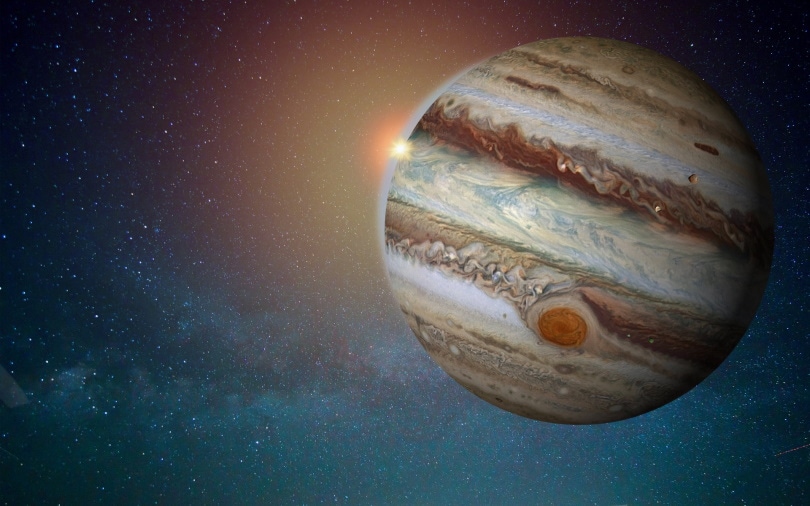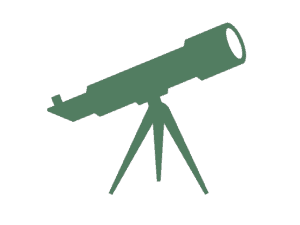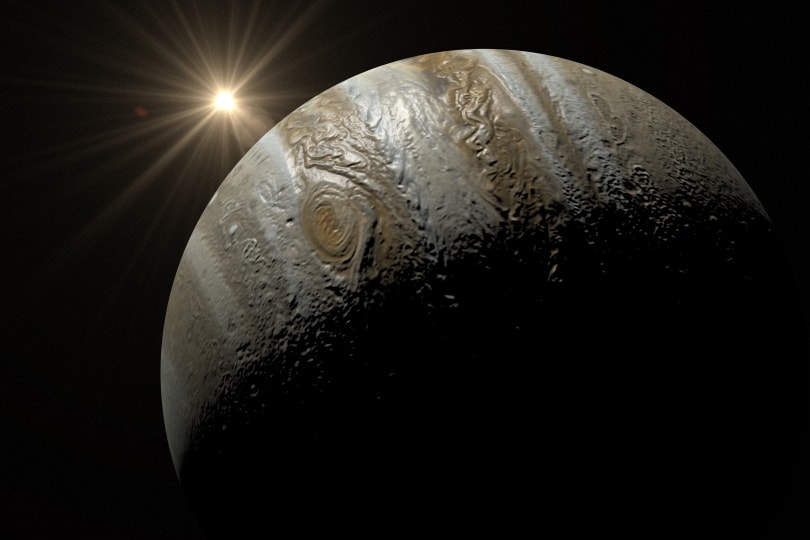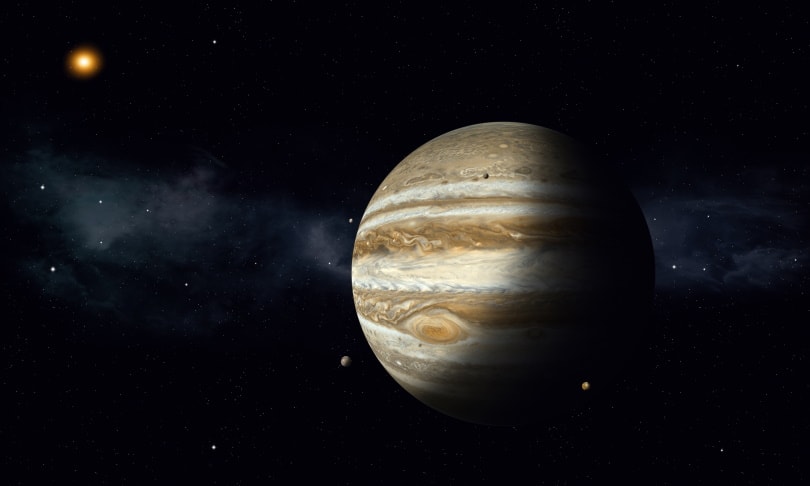How Long is a Day on Jupiter? How Long is a Year?
Last Updated on

Jupiter is the largest planet in our solar system and holds more than twice as much mass as all the other planets combined. To put Jupiter’s size into perspective, if Earth was the size of a grape, Jupiter would be larger than the size of a basketball. Jupiter is a gas giant with an atmosphere made of light elements such as helium and is one of the few planets with ring systems.
Because Jupiter is so large, it boasts a gravitational force strong enough to attract more than 75 moons. Since its discovery in 1610, nine spacecraft have visited Jupiter and its moons, with many more missions planned due to the wealth of knowledge exploring this unique planet grants us.
Jupiter is characterized by swirling, striped clouds of ammonia, ammonium hydrosulfide, and water, winds in excess of 1,000 mph, and a giant, hexagonal hurricane known as the Great Red Spot, which has been raging for centuries. The Great Red Spot is more than twice the size of Earth and is estimated to be 50 to 100 times deeper than the Earth’s oceans. This violently churning storm has mystified scientists all over the world, but its secrets are constantly being unlocked by spacecraft such as NASA’s Juno, which arrived at the planet in 2016.
A day on Jupiter lasts for around 10 hours, while a year lasts around 11.8 Earth years. Continue reading to learn more about this fascinating planet and how the days and years differ from Earth’s.

Time on Jupiter
Jupiter is characterized by the unique way time passes in its domain, with an extremely short day and a long year. Jupiter is only the fifth planet from the Sun, but it is still so far away that when we observe it from Earth, we are seeing it as it was 35 to 52 minutes ago. This essentially means that it would take us 35 to 52 minutes to get to Jupiter if we were to travel at the speed of light, or 186,000 miles per second.


How Long Is a Jovian Day?
The word Jovian means relating to Jupiter, so a day on Jupiter is often known as a Jovian day.
A day on Jupiter is approximately 10 hours long, which, for some on Earth, is the length of an average workday. Earth’s day, however, is 24 hours, which is also known as a sidereal day. A sidereal day is defined by the amount of time it takes for a celestial body to rotate about its axis. Jupiter, in fact, holds the Guinness World Record for the planet with the shortest day, meaning it also has the fastest rotational speed.
Jupiter’s equator rotates a little faster than its poles, so the length of its day varies depending on where on the planet it is measured. This is because as a gas giant, Jupiter does not rotate as a solid sphere. At Jupiter’s equator, a day lasts 9 hours and 50 minutes, but at the poles, a day is 6 minutes longer.

How Long Is a Jovian Year?
Likewise, a year on Jupiter can also be called a Jovian year. A sidereal year is defined as the time it takes for a body to make one complete trip around the sun. The Earth, for example, has a 365-day sidereal year. A year on Jupiter, however, is the equivalent of a Monday at work or 11.86 Earth years, with the planet traveling around the sun at an astonishing pace of 29,236 mph.


Conclusion
In summary, Jupiter is one of the most fascinating planets in our solar system and is of particular interest to scientists, engineers, and astronomers. It is a distant world characterized by violent storms and colorful, distinct, psychedelic cloud bands. Although Jupiter seems like a different dimension, it is still similar to Earth with its magnetic field, powerful flashes of lightning, and auroras.
Jupiter is unique in the way time passes in its domain, with the shortest day of all planets in the solar system, amounting to just about 10 hours long. However, Jupiter also has a contrastingly long year, with it making an orbit around the sun approximately every 11.8 Earth years. The more we continue to study Jupiter, the more secrets we will unlock about its formation and characteristics. Additionally, exploring Jupiter can possibly lead us in the right direction to understanding the significance of our humble place in the universe, or our “pale blue dot.”
Featured Image Credit: ParallelVision, Pixabay
About the Author Robert Sparks
Robert’s obsession with all things optical started early in life, when his optician father would bring home prototypes for Robert to play with. Nowadays, Robert is dedicated to helping others find the right optics for their needs. His hobbies include astronomy, astrophysics, and model building. Originally from Newark, NJ, he resides in Santa Fe, New Mexico, where the nighttime skies are filled with glittering stars.
Related Articles:
How to Collimate Binoculars: 9 Expert Tips
How to Clean a Refractor Telescope: Step-by-Step Guide
How to Clean a Telescope Eyepiece: Step-by-Step Guide
How to Clean a Rifle Scope: 8 Expert Tips
Can You Use Binoculars to Look At Stars? How to Choose the Right Pair
How to Choose Binoculars for Bird Watching: 10 Expert Tips
15 Crucial Facts About Ultraviolet Rays & the Sun
What Constellation Is Spica In? The Interesting Answer!
